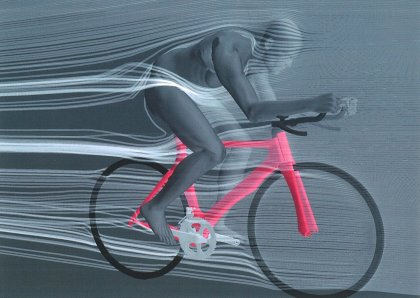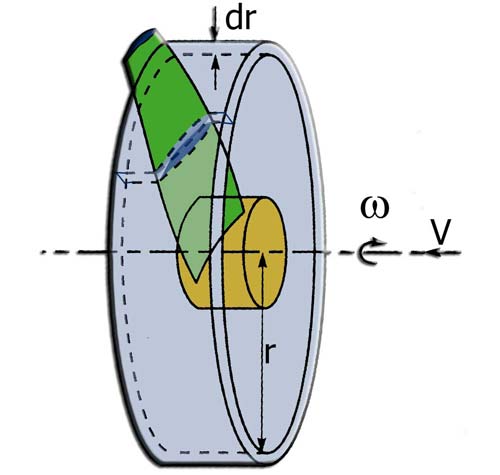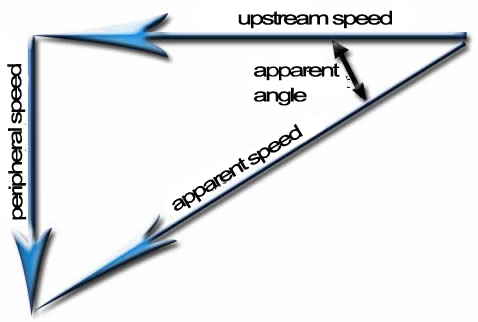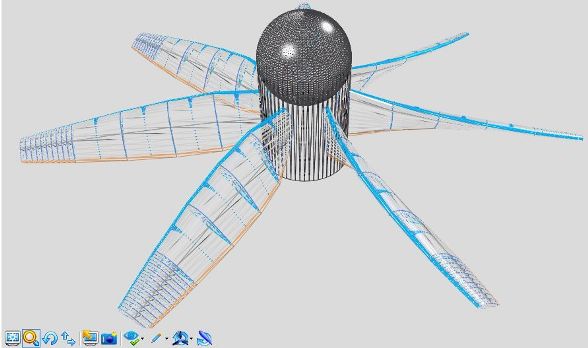The apparent speed, and apparent angle determine the twist of blade propellers
Understand and master the apparent velocity and apparent angle:
When a cyclist moves on a road 30 m / sec by a windless day, the relative velocity of wind for him to 30 m / sec. This bike can say that the apparent wind of 30 m / sec and it comes from the front. If the wind starts blowing facing him, the apparent wind speed will be composed of the speed of the cyclist and the wind speed.

- If the wind blows perpendicularly with a speed of 1 m / sec, the apparent wind will be made primarily on the speed of the cyclist and will almost face
- if perpendicular wind blowing at 30 m / sec, the apparent wind will all face perpendicular and that will be felt by the rider at 45 ° off course
- If the wind starts to blow at 800 m / sec the rider feel the wind almost perpendicular to the road is 90 °. Note also that he risk of permanently stop the bike with such a wind...
For a propeller blade element located at radius r, the relative speed is composed of the peripheral speed (m / sec) and the velocity V of the fluid upstream of the propeller.

The apparent angle received by a profile placed on radius r is thus the sum of the peripheral speed and the speed of the fluid upstream of the propeller:

- (pythagore)=sqrt(Vp²+V ²)
- tangent(apparent angle)=Vp/V
- The apparent angle is therefore = atan (Vp/V)
- propeller's blades's twist compensates the variation of the apparent angle:
- The air just front of an airplane propeller that rotates while the aircraft is stopped, is drawn through the propeller !
- The air just in front of a wind turbine turning is braked !
- Calculation methods and theories will inform you on the induced velocity and its calculation. Of course, the software tool Heliciel calculating these speeds to create the optimum twist in your propeller and produce plans 3D to create the prototype.


 Global site map
Global site map Mecaflux
Mecaflux Tutorials Mecaflux Pro3D
Tutorials Mecaflux Pro3D Tutorials Heliciel
Tutorials Heliciel Mecaflux Store
Mecaflux Store Compare software functions
Compare software functions Quotes, Orders, Payment Methods
Quotes, Orders, Payment Methods project technical studies
project technical studies